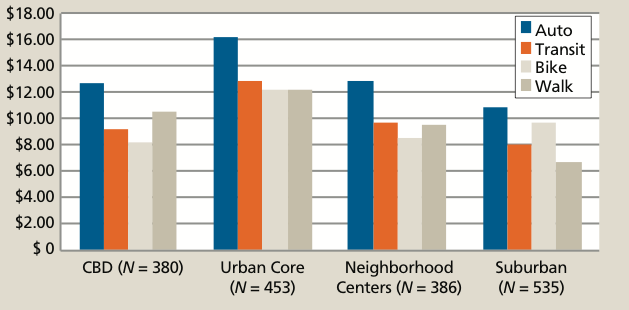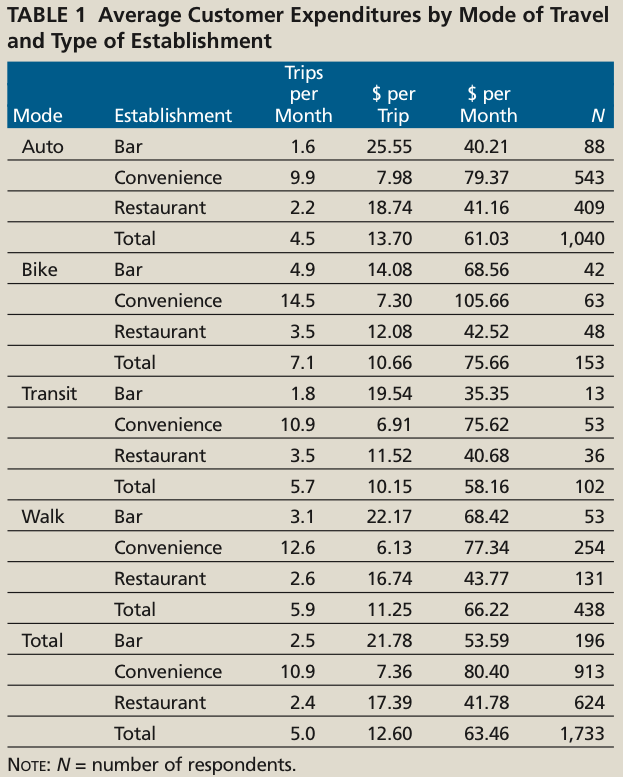PORTLAND STATE UNIVERSITY: NOHAD A. TOULAN SCHOOL OF URBAN STUDIES AND PLANNING
Cycling is on the rise across the United States, and its popularity has grown beyond the usual leaders—Portland, Oregon; Seattle, Washington; Davis, California; Minneapolis, Minnesota; and Boulder, Colorado. Other cities making significant investments in bike infrastructure in recent years include New York City; Chicago, Illinois; and Washington, D.C.—all three have realized substantial growth in the numbers of people taking to the streets on two wheels.
New York City has added more than 200 miles to its bicycle network, for example, and the number of bicycle commuters has more than doubled since 2007 (1). Many other cities, large and small, are eyeing these successes and recognizing the potential of cycling as a viable mode of transportation for their communities.
Although improvements that support bicycling can offer benefits such as reduced congestion, improved air quality, and healthier communities, many question the economic impacts, specifically for the business community. Some evidence supports the assertion that bicycling is good for business, but many business owners express concern that cyclists are not a lucrative market compared with customers who arrive by automobile. They argue that efforts to cater to cyclists—such as increasing bicycle parking and adding bike lanes—can hamper access for automobiles and that an economic return from new facilities is not guaranteed.
Empirical evidence to settle these claims is lacking, but anecdotal evidence points to an increasing awareness of the benefits that bicyclists bring to local businesses—for example, some businesses have made concerted efforts to cater to bicyclists, including the addition of features that support cycling, as well as programs or services for cyclist customers. A few emerging studies are working to understand the returns on these investments for businesses and for the community at large.
Returns on Investments
Several studies have aimed at understanding the influence of bicycle tourism and the cycling industry—such as bicycle manufacturers, retail and repair shops, and clothing merchandisers—on local and regional economies. Fewer studies have focused on the cyclist as a consumer and on the potential economic benefits to specific types of businesses.
Industry, Retail, and Tourism
Research into the benefits of recreational bicycling and bicycle tourism has tracked expenditures directly related to bicycle equipment or to travel-related food and lodging. A study of the Outer Banks in North Carolina estimates that tourists who come to the area specifically for bicycling generate approximately $60 million a year for the local economy, nine times the cost of constructing the bicycle facilities in the area (2). More than half of the visitors on the Greenbrier River Trail in West Virginia spend more than $100 per visit and most come from out of state (3). According to a recent study, the revenue generated by recreational cyclists and by bicycle tourism in Wisconsin amounts to nearly $1 billion annually (4). Colorado similarly estimates the impact of cycling by out-of-state tourists and active residents at $1 billion (5).
Read full report (PDF) here: Business Cycles: Catering to the Bicycling Market
About The Nohad A. Toulan School of Urban Studies and Planning
pdx.edu/usp
“Our mission is to assist in the development of healthy communities through an interdisciplinary program of teaching, research and public service. Faculty and students engage the intellectual, policy and practice aspects of urban studies and planning from the local to the international levels and actively participate in the analysis, development and dissemination of the innovations for which Portland and the Pacific Northwest are known.”








 RSS Feed
RSS Feed